The Truth About Regenerative Ranching
Sometimes the best way to explain a concept is to say what it is not. Experts from Noble Research Institute and Texas A&M address four common myths around regenerative ranching to help explain the truth of what it is.
You may be hearing things about regenerative ranching. That it’s the same as organic farming. That you would have to build all new fences and move your cows every day. That soil health is more important than livestock productivity.
It’s natural that new and unfamiliar concepts can lead to misconceptions and myths, such as those listed above. To help correct these misnomers, two experts give us the straight talk on regenerative ranching.
Caitlin Word is a livestock consultant with Noble Research Institute. Jeff Goodwin is the program director for Texas A&M’s Natural Resources Institute. They agree that a primary barrier to beginning the regenerative ranching journey can include unknown answers to fundamental questions.
Let’s start with one simple truth: Regenerative ranching is the process of restoring degraded soils using practices based on ecological principles. “In short, it’s important to understand that regenerative ranching is not a program, a certification, an endpoint or a set of rules,” Goodwin says. “That’s where some of the myths originate.”
The No. 1 thing regenerative ranching is, he says, is a mindset — a way of looking at things, even when looking at something seemingly as simple as cows grazing in a field. “Yes, we see cows on grass, but we’re also looking at multiple, dynamic ecosystem processes, all competing for balance. And we want these processes — the water, energy and nutrient cycles as well as community dynamics — to be healthy and in balance on our land.”
The regenerative ranching mindset looks holistically at the intersection of soil, plants, water, animals and the producer themself. As Word says, “So many good things can happen when we work in concert with nature and help cattle be in sync with their environment.”
Here are the four most common myths about regenerative ranching. Word and Goodwin address each in the hopes of helping producers start their own regenerative journey.
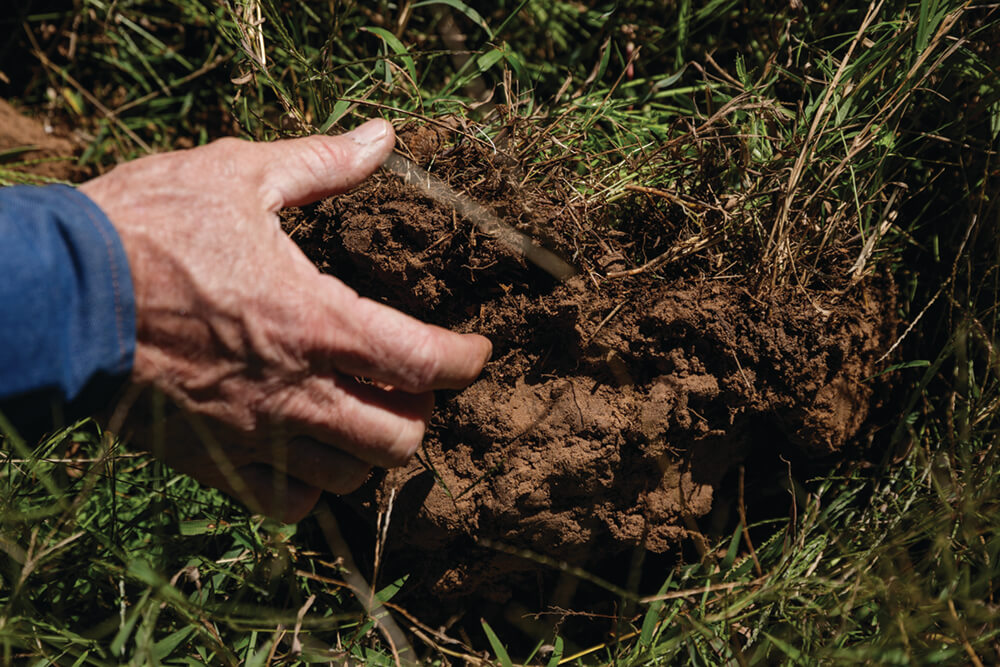
Myth: Regenerative ranching is the same as “organic,” “never-ever” or “all-natural” programs.
Truth: The aforementioned livestock production methods are based on prescriptive standards that lead to certification of the meat that’s produced and marketed to consumers:
- organic (the animal’s diet is certified organic and no antibiotics or growth hormones can be used);
- never-ever (varying lists of things “never ever” done – from administering antibiotics, adding hormones or artificial ingredients, to feeding anything but a grass-fed and vegetarian diet); or
- all-natural (which doesn’t refer to farm or ranch practices, but to not adding anything to the meat during processing).
This is not the case with regenerative ranching. “Regenerative ranching is not a certification or a program. It’s an adaptive framework of principles to help producers be able to build and repair broken ecosystems,” Goodwin says. “There is no checklist. There is no recipe. It’s adaptive management to local conditions.”
From an ecological perspective, adaptive management may mean a gradual transition away from an annual dependence on synthetic fertilizer rather than going cold turkey, he says. Using the soil health principles will create a healthy ecosystem of plants and soil organisms that can produce their own fertility, but it takes time.
Likewise, even regenerative ranchers with a goal of not using chemical brush control may find it necessary when they buy a property covered in mesquite. “Soil health is not going to magically get rid of the mesquite problem,” Goodwin says. “Context matters.”
In other words, there’s room in regenerative ranching to use these tools, judiciously and with intention, to mend broken ecosystem processes based on a producer’s specific context. Their use in transition can help reach the goal of not being forever dependent on them to reach some level of productivity.
The same applies to being good stewards of our animals as well as our land. Regenerative ranching neither prescribes nor prohibits the use of any tool producers believe is necessary for their operation. “For example, one ranch’s animal health protocol may include vaccination programs and antibiotics to treat illness or injury, while still ranching regeneratively,” Word says. “Another producer may choose to be both regenerative and organic and not use these tools.”
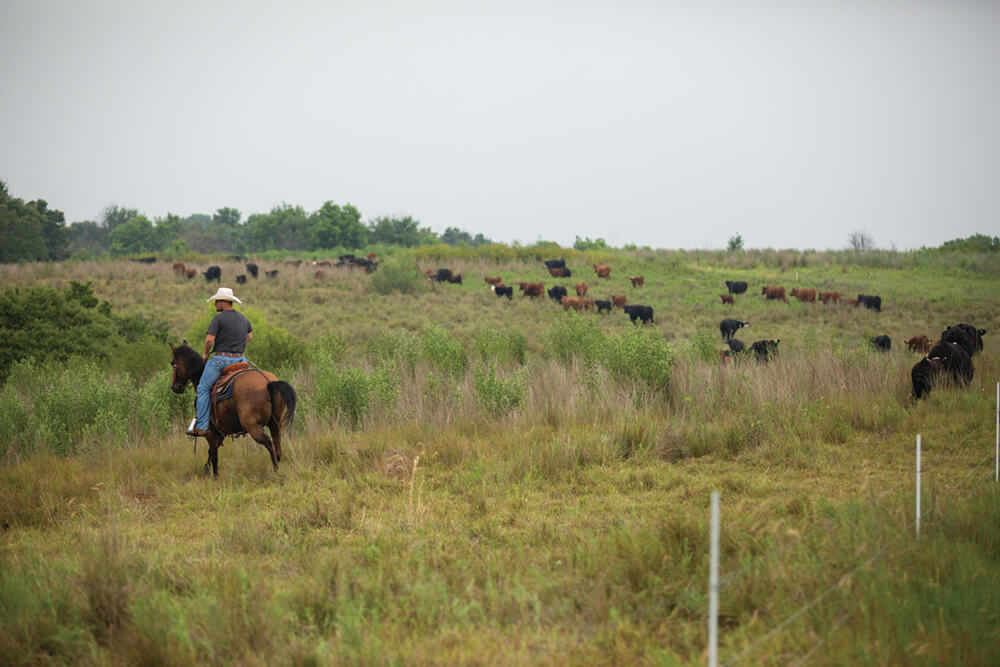
Myth: Regenerative ranching requires cattle to be moved every day or multiple times a day.
Truth: It’s not required, although some ranchers chose to do so.
Regenerative grazing, especially adaptive multi-paddock (AMP) grazing, attempts to mimic nature and the way livestock would naturally interact with ecological systems, “the way the relationship was designed to be,” says Word. “Think of bison on the Great Plains. They would roam, mob an area, then move on and not come back to that area for another five years, until the native prairie grasses recovered.”
Today, the primary objective of how grazing is managed in regenerative ranching is to do what the bison did — allow grass to fully recover before grazing it again. That means planning livestock movements to achieve the ecological outcomes you want on your ranch, not following a rigid grazing prescription.
Goodwin outlines the four tools ranchers need to balance and manage when it comes to grazing events aimed at pasture recovery: timing, intensity, frequency and duration. “Managing with those four key tools gives the rancher more control over the time that allows that plant or that pasture to recover,” he says.
This principle is in contrast to setting a rigid, prescriptive stocking rate and a calendar of scheduled moves that are made without regard to the pasture condition or how the cattle are behaving or performing.
“Once you are in a regenerative system, the cattle will tell you when they’re content and when they’re no longer content, if you just pay attention,” Word explains. She also understands why producers just starting out with regenerative ranching may worry about their cattle’s ability and willingness to move so often. There is a learning curve for both humans and livestock.
“We’ve managed a lot of the foraging ability out of domestic cattle with monoculture pastures,” she says, “so regenerative ranching includes ‘biomimicry’ — imitating what cattle are naturally designed to do, and managing to help them do it.”
Experienced regenerative practitioners report their cattle soon become used to seeing them among the herd and gladly move to fresh forage. They become more docile, which makes it easier and saves labor when it’s time to work them, Word says. “The cattle also regain their natural foraging skills and better utilize pastures by grazing more than just the grass.”
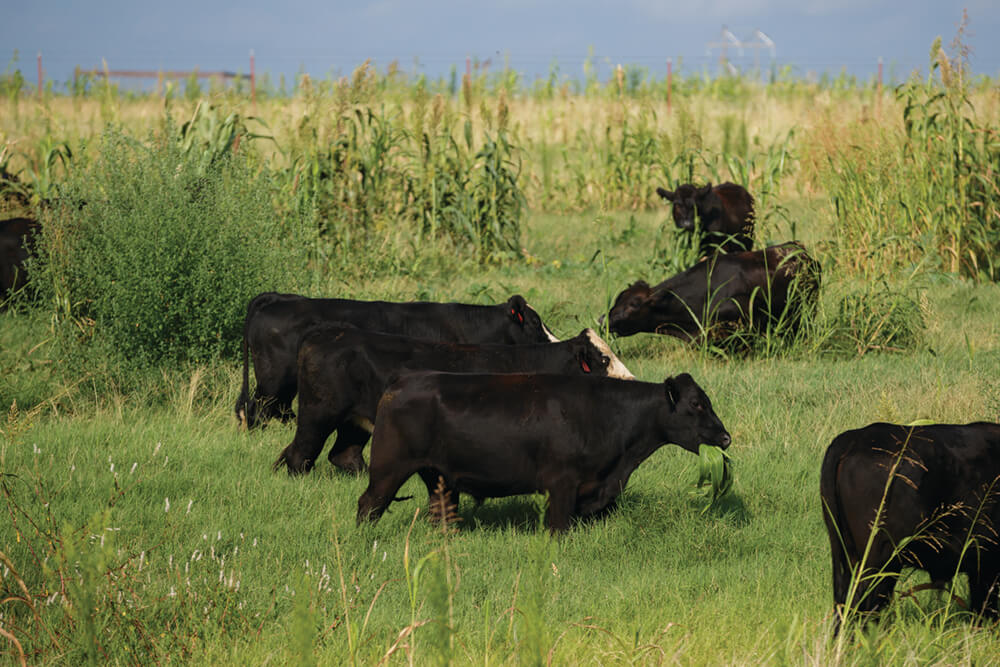
Myth: Regenerative ranching causes you to sacrifice livestock performance for the land.
Truth: This myth comes partly from equating the practice of high-intensity or “mob” grazing with regenerative ranching. Producers may believe their cattle will lose condition if they have to move them daily, or multiple times a day, pushing them to be selective as they graze and shorting them on forage.
It’s possible that livestock performance could suffer if high-intensity grazing is used as a rotational grazing “practice” without looking holistically at the whole picture and focusing on the ecological principles, Word explains. “The point of regenerative is to reach a place where you don’t have to supplement as much, because you’ve put your animals in sync with their environment.”
Part of connecting cattle with nature is expanding their grazing palate beyond foods that are safe and familiar, just like with humans. Word recalls a herd that had been acquired and put on one of Noble’s ranches. The herd had come off a wheat pasture and being fed a mixed ration every day. “We turned them out to graze in a multi-culture pasture, and they didn’t know how! They were seeing stuff they hadn’t seen before.”
After grazing under denser conditions and a little bit of pressure, she says, the cows learned to forage and eat more of the present plant species. Helping herds regain that natural skill through biomimicry increases pasture utilization, extends the grazing season and can improve livestock health with a more diverse grazing diet.
Goodwin revisits the point that by managing the timing, the frequency and the duration of regenerative grazing, producers should be able to limit issues with performance while caring for the soil, if there’s adequate forage. “But come February,” he acknowledges, “if forage quality isn’t adequate to meet nutrient requirements for that cow, there is going to be a need to supplement, and that’s OK.”
Contrary to another part of the performance myth, supplementation to meet the needs of the cow in a regenerative system is not off the table, Goodwin adds. The goal is to be supplementing for forage quality to keep cows in condition, rather than paying to substitute for lack of forage quantity.
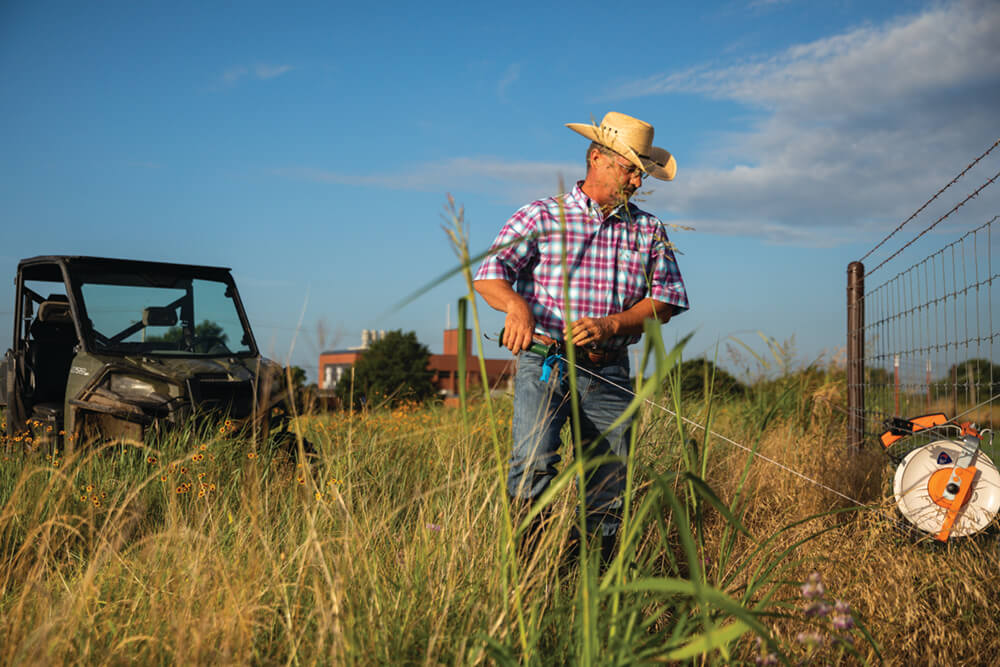
Myth: Regenerative ranching requires too much costly infrastructure.
Truth: Does regenerative ranching require you to put in 17 miles of permanent fencing, 18 concrete water troughs and clear all the brush on the ranch before you can start? Not at all.
“You can start right where you are,” Word says. “This is all about adaptability, and there’s nothing adaptive about saying ‘you’re not regenerative until everything is split up within a certain amount of acres.’”
Goodwin echoes that advice: “Start with the infrastructure and conditions you have.”
Both consultants recommend temporary fencing to make smaller paddocks that can use the same water source. Or use a movable water trough that quick-connects along a pasture pipeline. If brush density is an issue, make a brush control plan, and start on it as you can. “Infrastructure challenges need not preclude you from beginning the journey of being regenerative,” he says.
People hear “regenerative” and worry about spending too much money on water and fences, Word explains, “but consider where your investment is now. Sit down and pencil out how much money you spend feeding your cattle all winter; the labor and fuel to haul hay; money lost by not utilizing your pastures to the best of those animals’ abilities.”
It’s a matter of changing the investment from production to adaptability. “You could adapt that herd where you don’t have to do that winter feeding anymore,” she adds.

Principles, Not Practices
It’s understandable to have myths, or preconceptions, about what may be a new way of looking at ranching and grazing management. For many producers, it’s not uncommon to use practices just because “we’ve always done it that way” or because they’ve come to depend on them to reach some level of productivity. Most may not instinctively look to principles as a guide.
But rather than reaching for practices or prescriptions to repeatedly fight a broken ecological system, regenerative principles are a method to mend the ecosystem processes on the land. Regenerative ranching is about letting each piece of the system (soil, plant, water, animal and the producer) work synergistically. “The land was made for the cattle, and the cattle were made for the land,” Word says. “And we are stewards of the land and the animals.”
The biggest thing, the first thing, is getting the mindset right, Goodwin believes. Stepping back and looking at the community of your ranch from a holistic perspective, not as individual pieces. “Once you see the picture differently, your mindset begins to change. And you’re ready to start regenerative ranching, right where you are.”
Comment
Leave a Reply
2 comment on: "The Truth About Regenerative Ranching""

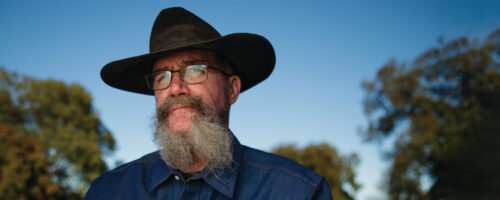

Elton W Hammock
May 30, 2023I very much appreciate your treatment of this subject. Well studied and articulated. Thanks!
Dianna Dean Archer
July 24, 2023From a long line of cattle growers and farmers in West Texas, the mindset of regenerative principles has won my heart!
I appreciate how you present this back-to-nature approach. Please keep up your zeal to convert more ranchers, so feed lot finishing is finally an ugly, out-dated practice of the past